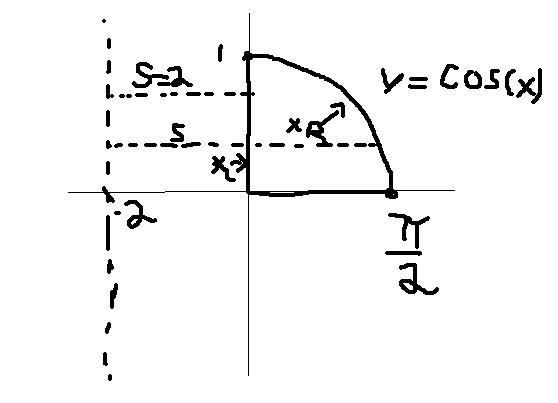Science:Math Exam Resources/Courses/MATH101/April 2009/Question 03 (b)
{{#incat:MER QGQ flag|{{#incat:MER QGH flag|{{#incat:MER QGS flag|}}}}}}
• Q1 (a) • Q1 (b) • Q1 (c) • Q1 (d) • Q1 (e) • Q1 (f) • Q1 (g) • Q1 (h) • Q1 (i) • Q1 (j) • Q2 • Q3 (a) • Q3 (b) • Q4 (a) • Q4 (b) • Q5 • Q6 (a) • Q6 (b) • Q7 (a) • Q7 (b) • Q7 (c) • Q8 (a) • Q8 (b) •
Question 03 (b) |
|---|
|
Let be the finite region in the -plane bounded by , and . (b) Express the volume of the solid obtained by rotating about the line as an integral. Do not evaluate the integral. |
|
Make sure you understand the problem fully: What is the question asking you to do? Are there specific conditions or constraints that you should take note of? How will you know if your answer is correct from your work only? Can you rephrase the question in your own words in a way that makes sense to you? |
|
If you are stuck, check the hints below. Read the first one and consider it for a while. Does it give you a new idea on how to approach the problem? If so, try it! If after a while you are still stuck, go for the next hint. |
Hint 1 |
|---|
|
By solving the first part of this problem, you should know the points of intersection. Drawing a picture will probably help. |
Hint 2 |
|---|
|
We are rotating about an axis parallel to the y-axis |
Hint 3 |
|---|
|
Try modifying the formula (Note: this entire problem can also be solved by interchanging the x and y variables) |
|
Checking a solution serves two purposes: helping you if, after having used all the hints, you still are stuck on the problem; or if you have solved the problem and would like to check your work.
|
Solution |
|---|
|
A picture is included below. To solve this question, we need to use the method of left and right side integration. Recall the formula where we think of and as functions of y and the factor is the shifting factor (so basically this factor accounts for what line we are rotating over - the picture should make this clear). Here, the right most curve is and the left most curve is and the factor in this case is 2. The last thing is the limits of integration. we know on the x-axis, from the previous problem, we were integrating from 0 to . Here however we are integrating from the y-axis so we want to know when crosses the y-axis. This occurs when . Thus, we have To challenge yourself, try showing the above is actually equal to . |
{{#incat:MER CT flag||
}}



















